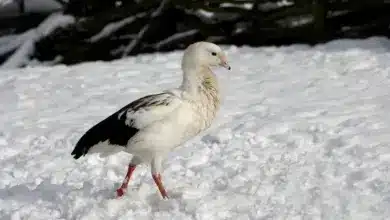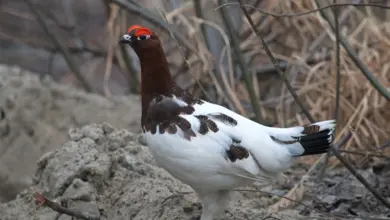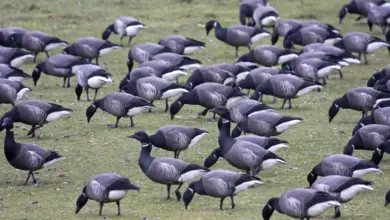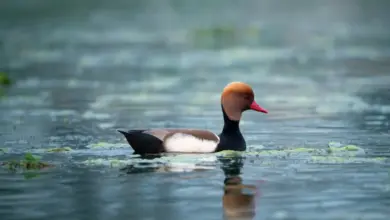The Blue-winged Geese (Cyanochen cyanoptera) is a waterfowl that occurs naturally in Ethiopia – which is located in the Horn of Africa (the easternmost part of the African landmass).

Description
This is a stocky grey-brown bird measures about 70 centimetres (28 in) in length.
It has a slightly paler head and upper neck. It has a small black bill and black legs.
In flight, the pale blue forewing can be seen.
Males and females look alike.
Immature birds have a thick and loose plumage, which has been described as “furlike.”
Voice
The Blue-winged Goose is a quiet species, but both sexes may give a soft whistle; it does not honk or cackle like the true geese.
Habitat
The habitats of the Blue-winged Goose are primarily rivers, freshwater lakes, swamps, freshwater marshes, water storage areas, and subtropical or tropical high-altitude shrubland or grassland.
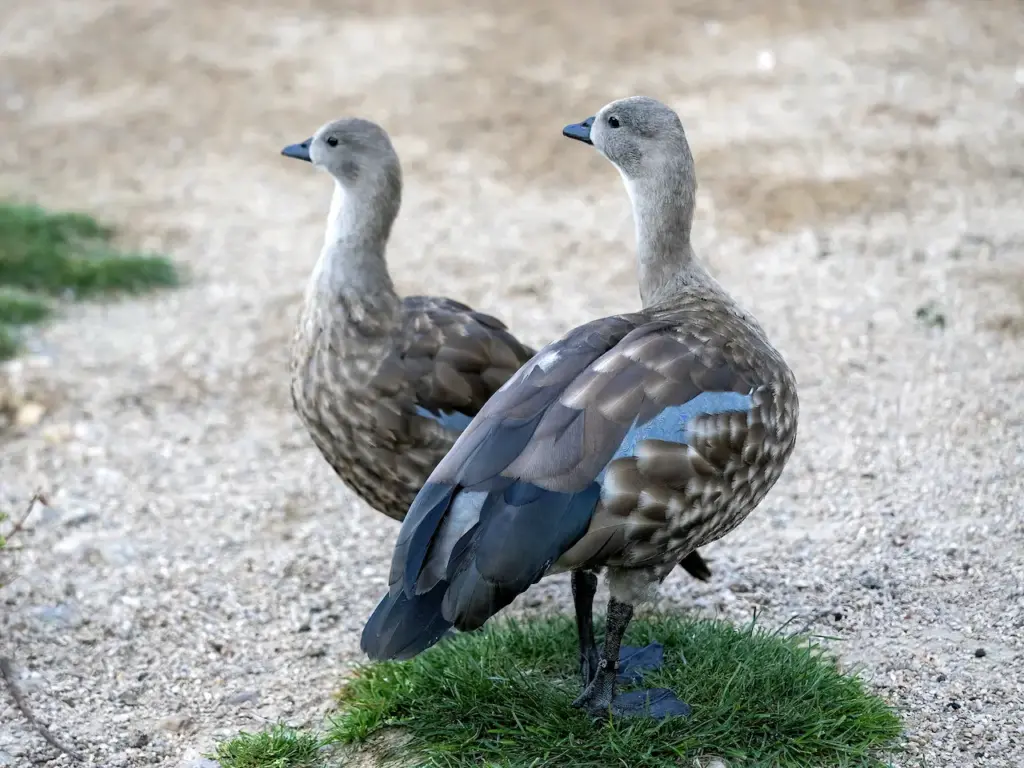
Behaviour
It feeds by grazing, and is apparently largely nocturnal, loafing during the day. It can swim and fly well, but this terrestrial bird is reluctant to do either, and is quite approachable. It forms flocks outside the breeding season.
It breeds by mountain lakes and streams. This little-known species is believed to build a lined nest amongst grass tussocks, and to lay 6-7 eggs.
Diet / Feeding:
Blue-winged Goose feed by grazing, and seem to be largely nocturnal, loafing during the day.
Ducks and geese generally feed on larvae and pupae usually found under rocks, aquatic animals, plant material, seeds, small fish, snails and crabs.

